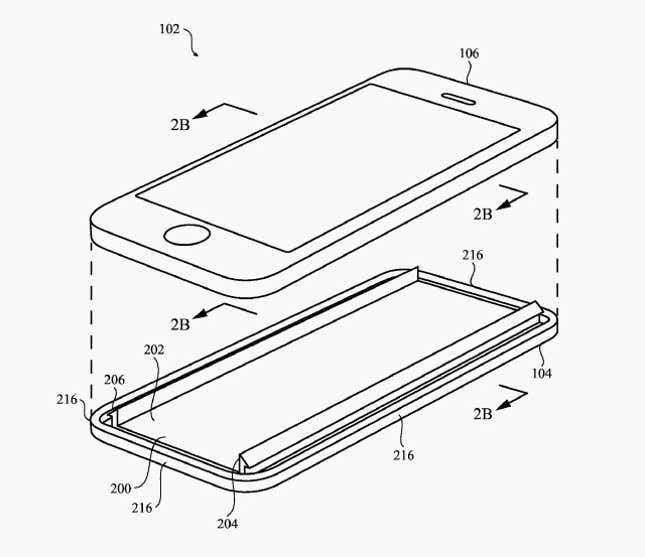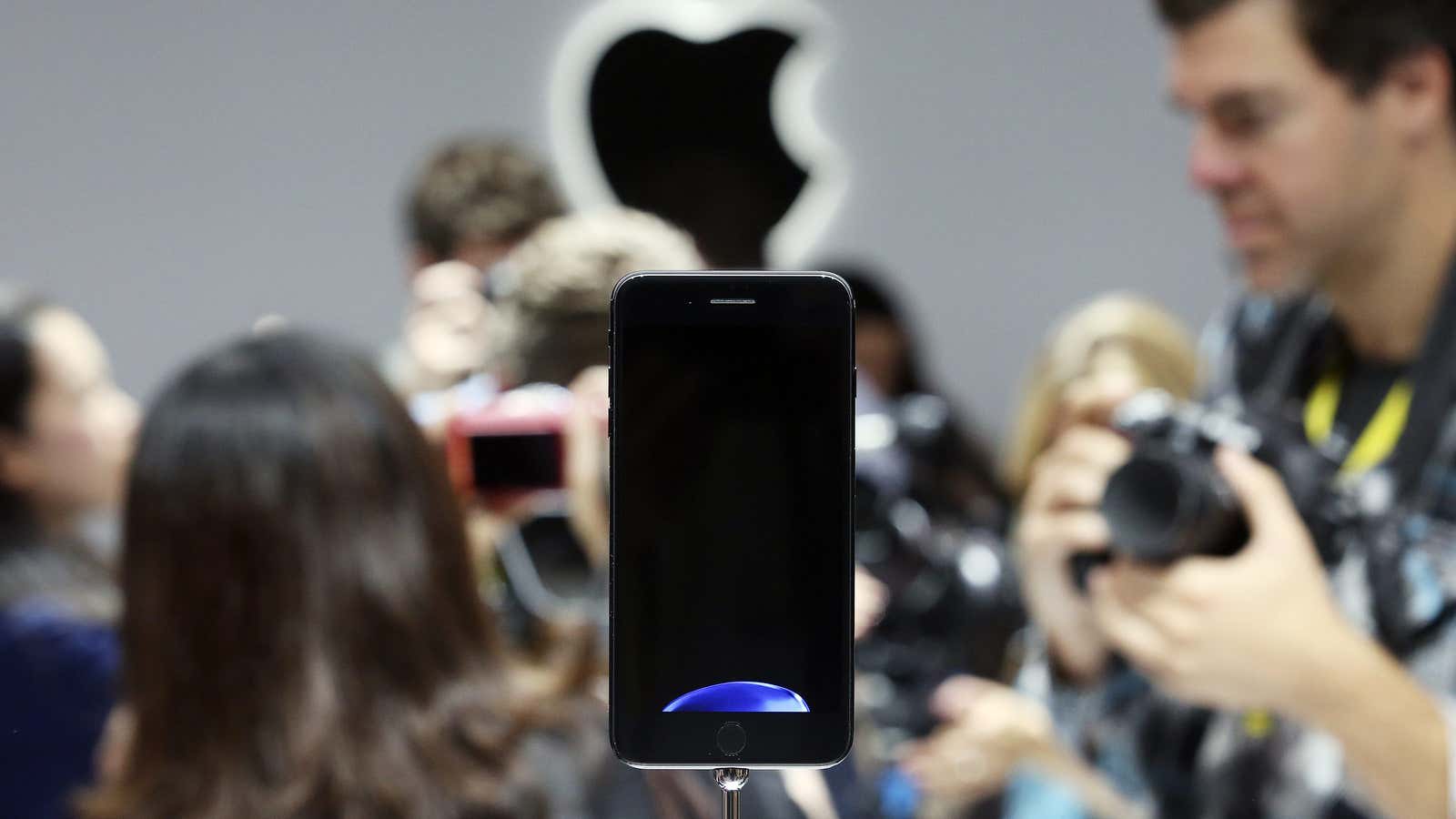The next iPhone will be made of Apple’s “stunning ceramic,” a light, super-smooth, scratch-resistant compound that’s already being used in the new Apple Watch Edition. That’s the theory, anyway, but one that’s strongly argued by self-styled “alchemist and metaphysician” Brian Roemmele on Quora.
Roemmele points to three Apple filings with the US Patent and Trademark Office to back up his prediction. Collectively, they show that Apple has developed techniques to make ceramic components that contain electronics.
The newest filing, published Sept. 8, is the most interesting. It’s a patent application that describes how Apple could ”co-mold” a housing for an electronic device from polymer—which could be a plastic or rubber—and ceramic. The ceramic part is the external housing, while the polymer, which is easier to mold into intricate shapes, comes into contact with the electronics. Co-molding the materials means the components can be made more precisely and quickly than if they were manufactured separately and then glued together, the filing states.
The filing includes drawings of a co-molded housing for a watch, smartphone, and tablet. Here’s the smartphone one:

It makes sense for a smartphone to have a ceramic housing. The filing runs through ceramic’s benefits, reading like a drier version of the ad copy describing the ceramic Apple Watch Edition. It notes that ceramics are “highly scratch resistant,” able to achieve a “high degree of surface polish,” and don’t weigh a lot. “Ceramic materials have numerous qualities that make them particularly useful for use in electronic device housing,” the document reads.
The Apple Watch Edition, the high-end version of the Apple Watch, contains clues to what a future ceramic iPhone could look and feel like, Roemmele points out. Apple says the ceramic used in its watch contains zirconia and alumina (oxides of zirconium and aluminum) . The use of zirconia makes the ceramic difficult to break, scratch-proof, and cool to the touch even when its electronics are pumping out heat, according to Jon Binner, professor of ceramic science and engineering at the University of Birmingham. Crucially, it will also be “radio transparent,” meaning that radio frequencies can penetrate it easily, so the device should have less trouble getting a signal. These properties would help an iPhone or iPad, too.
Binner notes that it won’t be easy to create a ceramic enclosure for an iPhone. For instance, the reason zirconia ceramic will be cool to the touch is that it doesn’t conduct heat easily, so Apple has to figure out some other way of extracting the heat generated by electronics inside the casing. Adding alumina improves heat-transfer, Binner says. Most ceramics are also brittle, meaning a dropped phone could shatter on impact, although Binner says zirconia is the toughest of them all. ”Throughout all of the above, you need ease of manufacturing,” he says. ”Ceramics are not easy (or cheap) to make, but for those skilled in the art it wouldn’t be a major issue.”
Apple sleuths have been bandying the idea of a ceramic iPhone around for awhile. In 2010 Apple-watcher John Gruber thought the iPhone 4 might be made of ceramic, based on a patent filed back in 2006—before the first iPhone was launched—for a ceramic enclosure for a “handheld computing device.”
Roemmele’s theory is based on patent application filings, which are routinely lodged by huge tech companies like Apple. Most of these patents never see the light of day in a commercial device, so we should take them with a grain of salt. But it’s not hard to see why Apple would be interested in a material that could make the next iPhone lighter, shinier, smoother, and more brilliantly colored—the iPhone 8 in “stunning ceramic.”
